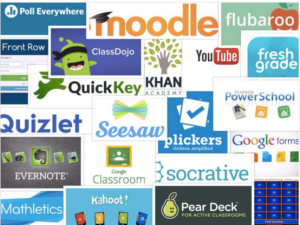I appreciated this weeks class on AT. I feel that
Heidi,
Holly,
Allison,
Launel, and
Benita did a great job on explaining the variety and the importance of these tools for not only specific situations but also the role they play in an everyday classroom.
In my short time as a teacher I have had the opportunity to work with a minimal amount of assistive technology. I have taught a student who was legally blind and needed visual assistance. The student was new to the city, and our division. It was only my second or third year teaching. Through my board office, school counselor, TA/EA's, consultants,my administration, the child's parent and myself we all worked together to ensure we were accommodating his needs and providing the best educational experience he could receive within our division.
One of my main contacts for assistance in learning how to use the technology and developing lessons that were more visually impaired friendly was
Dwila Nixon. She is an invaluable resource within the Regina Public Schools Division in her specialized field of working with visually impaired students.
The process for gaining access to the resources were difficult. We needed an Ophthalmologist report to determine the level of support that the board would grant. This was hard to obtain due to the lack of the physical report on the parents end because of a rushed move from their previous residence outside of the province. So the parent needed to have a Saskatchewan Ophthalmologist take a look and do a report for the child. While we waited on the report the Program for Students with Visual Impairments (PSVI) program ran out of
Arcola Community School got us set up with a software program called
ZOOM, which enabled us to have the student work on a laptop.
We also utilized a
CCTV (page enlarger), which was bulky and sat at the back of our room. This provided my student the opportunity to choose a book from the library and read it during our DEAR time. This tool was not used often, I believe it was because he felt awkward using something "different" than the other students, and it also set off a loud hum when it was on, causing it to draw more attention than it needed.
Dwila has sent me some more sources that they are utilized when assisting those with Visual Impairments. Here is an article on
Assistive Technology forStudents who are Blind or have Low Vision by Jaroslaw Wiazowski. The article goes through how to identify problems, what some possible solutions may be, and a variety of tools that can support. It discusses the importance of environment, tasks that can help both at home and in the learning space, and a scale of increasing tools that coincide with the decreasing visual ability.
 |
| Adaptations Chart: Jaroslaw Wiazowski |
The next source of information that Dwila sent me was to a site that discussed
21 Chrome Extensions for Struggling Students and Special Needs. The top of their list was Google Read & Write, but throughout it it gave a variety of other tools that could be very useful for a variety of students as well. I found similarities with some, such as the
BeeLine Reader, which removes all the adds from a webpage and focuses the text for the students. The reason I like this is because if at home you do not use Chrome, or Google Apps you still have the ability to utilize some of the main functions of Google Read and Write. I really do suggest checking out the Chrome extension article, especially if you do not have full access to Chrome books, or GAFE within your division, school, or home.
Finally the last site that I was sent to was a site that laid out an extensive overview of the variety of devices that are available for visually impaired people.
Teaching Students with Visual Impairments is a very overwhelming site as it has so many options to go through, but simply the home page is enough you help give an understanding at the breadth of tools available to make your classroom more accessible and higher functioning for people with visual impairments. I really like the section "
Overview of Assertive Technology". This page gives a nice summary of what the main options for tools are and the inherit point of each type of device.
Overall I found that teaching a student who needed to utilize some AT only made me a better teacher. The skills and techniques I had to employ to ensure my visually impaired student was understanding the concepts, and my lessons forced me to be more clear, concise and lay out my lessons plans in a very organized manner so that he would be able to revert back and understand what each lesson was about. When doing these things not only did I help that one student but I had improved my teaching for all my students.


